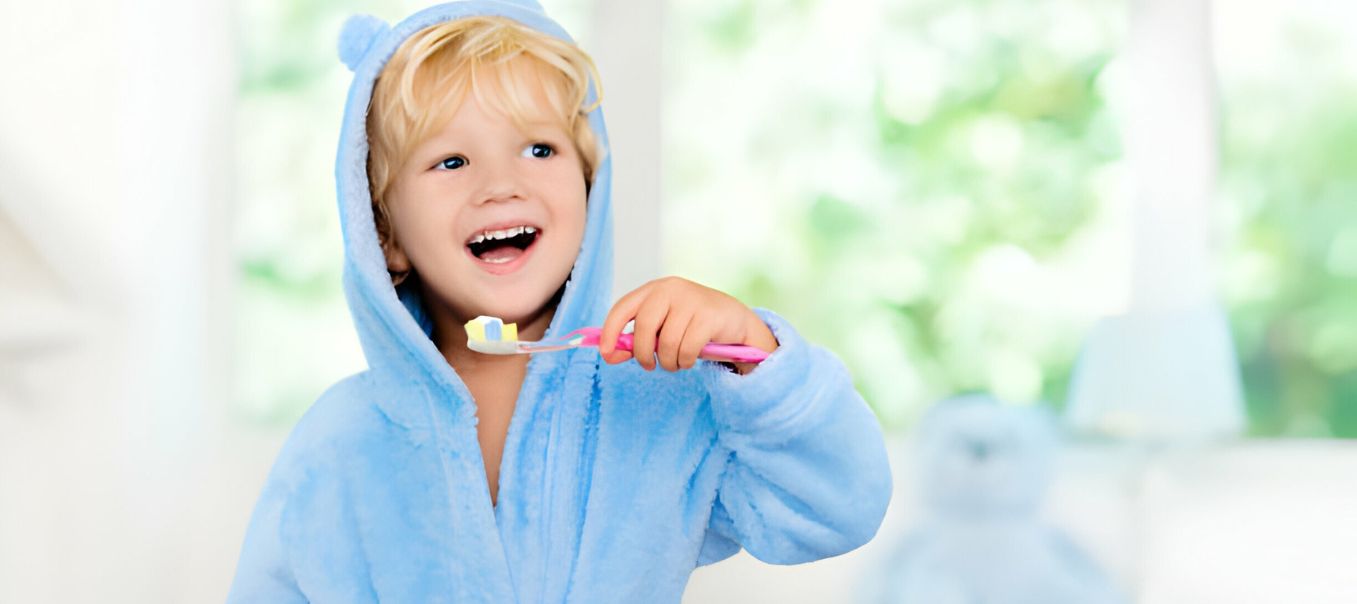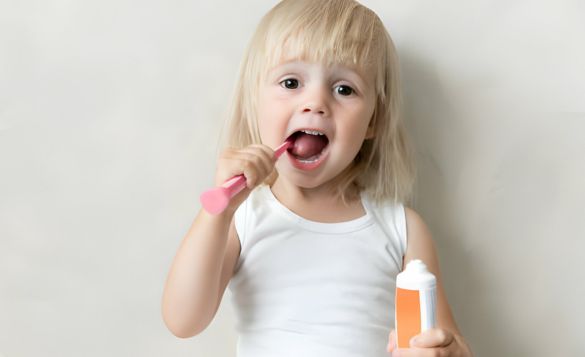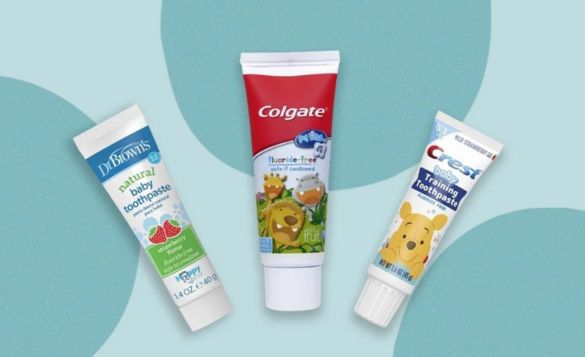
Archives
Categories


When it comes to nurturing our little ones, we want to give them nothing but the best. And that includes their oral care routine. That’s where baby toothpaste comes in. Specially formulated for our tiny tots, baby toothpaste provides gentle and effective cleaning for those precious little smiles. But with so many options out there, how do you choose the right one for your child?
In this article, we will explore all things baby toothpaste to help you make an informed decision. From understanding the importance of early oral care to deciphering the ingredients to look for, we’ve got you covered. Plus, we’ll provide you with valuable tips on how to make brushing a fun experience for your little one.
Good oral hygiene is essential from an early age, and using the right toothpaste is a crucial aspect of that routine. Baby toothpaste plays a vital role in maintaining the health of your child’s teeth and gums. It helps prevent tooth decay, cavities, and gum diseases that can cause pain and discomfort.
Baby toothpaste is specially formulated to be safe for infants and toddlers. Unlike adult toothpaste, it does not contain fluoride, which can be harmful if swallowed in large amounts. Instead, baby toothpaste is designed to be gentle on delicate gums and teeth while still effectively removing plaque and bacteria.
Using baby toothpaste also helps establish a healthy oral care routine early on, setting the foundation for a lifetime of good dental habits. It teaches children the importance of brushing their teeth regularly and instills positive associations with dental hygiene.

When it comes to choosing the right baby toothpaste, there are a few factors to consider. First and foremost, ensure that the toothpaste is specifically formulated for babies and toddlers. Adult toothpaste may contain ingredients that are not suitable for young children.
Look for baby toothpaste that is free from artificial flavors, colors, and preservatives. These additives can be harsh on sensitive gums and may irritate them. It is best to opt for natural or organic toothpaste that is made with safe and gentle ingredients.
Another essential factor to consider is the taste of the toothpaste. Babies and toddlers can be picky when it comes to flavors. Choosing a toothpaste with a mild taste that your child enjoys is a good idea. This will make brushing a more pleasant experience for both of you.
Additionally, check for the American Dental Association (ADA) seal of approval on the packaging. This ensures that the toothpaste has undergone rigorous testing and meets the highest standards of safety and effectiveness.
Brushing your baby’s teeth can be a challenge, especially when they are too young to understand the importance of oral hygiene. Here are some safe brushing techniques to make the process easier:
Start Early: Even before your baby has teeth, it’s important to clean their gums. Use a clean, damp washcloth or a silicone finger brush to gently wipe their gums after feeding.
Use the Right Tools: Once your baby’s teeth start to emerge, switch to a soft-bristled baby toothbrush. Look for a brush with a small head and a handle that is easy to grip.
Gentle Circular Motions: When brushing your baby’s teeth, use gentle circular motions along the gumline. Be careful not to apply too much pressure or scrub vigorously, as this can cause gum irritation.
Make it Fun: Turn brushing into a fun and interactive activity. Sing songs, play games, or use toothbrushes with colorful designs to make brushing more enjoyable for your little one.
Lead by Example: Children learn by imitating their parents. Let your child see you brushing your teeth regularly to encourage them to do the same.
Remember, consistency is key. Aim to brush your baby’s teeth at least twice a day, preferably after breakfast and before bedtime.

The American Academy of Pediatrics recommends using a smear of toothpaste on your baby’s toothbrush as soon as their first tooth appears. This is usually around six months of age. Until the age of three, use a rice-sized amount of toothpaste. From the age of three onwards, a pea-sized amount is sufficient.
Starting early allows your child to become accustomed to the taste and texture of toothpaste. It also helps establish a routine and promotes good oral hygiene habits from an early age.
Using the right amount of toothpaste is important to ensure effective cleaning while minimizing the risk of swallowing too much fluoride. For babies under three years old, a rice-sized amount of toothpaste is all that is needed. This small amount provides enough fluoride to protect their teeth without posing a risk.
For children aged three and above, a pea-sized amount of toothpaste is sufficient. This dosage provides adequate fluoride protection while minimizing the risk of ingestion.
Always supervise your child while they brush their teeth to ensure they spit out the toothpaste and do not swallow it. Encourage them to rinse their mouths with water after brushing.
Introducing toothpaste to your baby can be a gradual process. Here are some tips to make the transition smooth and enjoyable:
Start with water: Initially, you can wet your baby’s toothbrush with water and gently brush their teeth and gums. This helps them get used to the sensation of brushing.
Gradually introduce toothpaste: Once your baby is comfortable with toothbrushing, you can start introducing a small amount of toothpaste. Begin with a rice-sized amount and gradually increase it to a pea-sized amount as they grow older.
Make it a positive experience: Use positive reinforcement and praise your baby for their efforts during brushing. Offer rewards or small incentives to make it a fun and rewarding experience.
Be patient: It may take time for your baby to get used to the taste and texture of toothpaste. Be patient and persistent, and eventually, they will learn to enjoy brushing their teeth.
In conclusion, baby toothpaste plays a crucial role in maintaining the oral health of our little ones. By choosing the right toothpaste, understanding the ingredients, and following safe brushing techniques, we can promote good oral hygiene from an early age.
Remember to start early, use the appropriate amount of toothpaste, and make brushing a fun experience for your baby. With the right toothpaste and a consistent oral care routine, you can keep those little pearly whites shining bright and set the foundation for a lifetime of healthy smiles.
So, take the first step today and choose the perfect baby toothpaste for your child. Their little smiles deserve nothing but the best.
When selecting toothpaste for babies, it’s essential to choose a fluoride-free toothpaste specifically formulated for infants. Look for toothpaste brands that are gentle on delicate gums and free from artificial colors, flavors, and preservatives.
Yes, your 7-month-old can use toothpaste, but it’s crucial to choose a toothpaste that is safe and suitable for infants. Begin brushing your baby’s teeth as soon as they erupt, using a small amount of fluoride-free toothpaste on a soft-bristled baby toothbrush.
While kids’ toothpaste is generally safe for older children, it may not be suitable for babies under 2 years old. Kids’ toothpaste often contains fluoride, which can be harmful if swallowed in large amounts. It’s best to use a fluoride-free toothpaste specifically designed for infants until they are old enough to spit out toothpaste effectively.
Children can start using toothpaste when they have their first tooth. Typically, this occurs around 6 months of age. However, it’s essential to use a minimal amount of fluoride-free toothpaste until your child learns to spit it out, usually around age 2 or 3. After this age, you can transition to fluoride toothpaste in small amounts under adult supervision.
Our website uses cookies to improve your experience. Learn more about: Cookie Policy
Leave a Reply